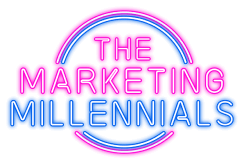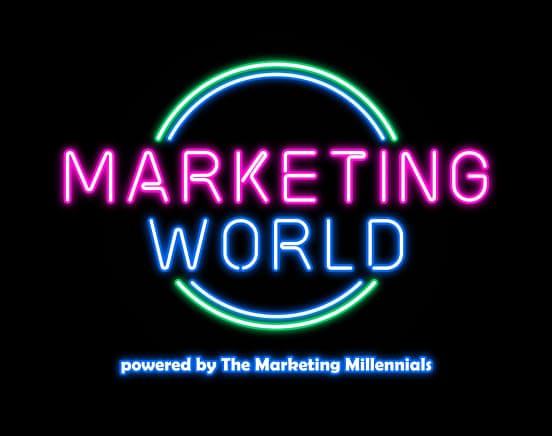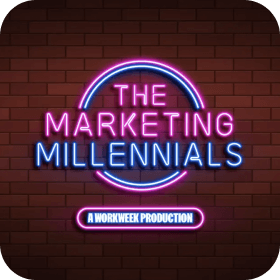Today’s guest is at the intersection of social media, community, and brand affinity.
Marketing Besties, meet Christina Garnett.
Christina is the Principal Marketing Manager of Offline Community and Advocacy at HubSpot. Yes, THAT HUBSPOT!!
Get your notepads ready, because she’s opening the playbook on the 2 beers and buzzed mentality that brands MUST follow.
Here’s what Christina had to say about building community on The Marketing Millennials Podcast, in her own EVER SO LIGHTLY edited words.
1. Fix the disconnection between your brand and customers:
“In 2022 we saw the further disconnection between brands and consumers.
We’ve been on the internet long enough, we know what ads look like, we know what a hook is.
Whether they are in marketing or not, consumers have seen the tricks before. The best example is Black Friday.
If you looked at social media during Black Friday, there were more conversations about people’s inboxes being flooded with 100s of emails from brands, instead of people excited to buy (YES).
It was a completely different conversation.
Consumers are now using Black Friday to remember what email list they’re on and to unsubscribe from them. Not to save money.
The relationship we have with brands is deteriorating. It doesn’t feel special.
In communities, you know that if someone recommends something, they may not have anything to gain from it. But a brand is always going to have something to gain from selling.
As consumers we go on Amazon and look at reviews from complete strangers and take their word. We go to TikTok and watch hauls to see what something looks like.
(Not me using TikTok to watch hauls so I know what to buy Ari – LOL).
You’re seeing the entire user culture shift towards this community functionality instead of brand functionality.
Level up your marketing game
Zero BS. Just fun, unfiltered, industry insights with the game-changers behind some of the coolest companies from around the globe.
No spam. Unsubscribe any time.
We know brands are going to tell us their product is great. That isn’t necessarily the truth. A community will give you the truth.
2. An important facet of community building:
The difference with a community is that it is people talking to people, not people talking to a brand
HubSpot uses a platform called Community Champions. Its purpose is to encourage collaboration and peer-to-peer communication that makes a community helpful.
They have a team of people who work in the community. They’re contributing to the community, AND helping people find solutions.
The team actively looks to see where the questions are. Where are the people who are struggling or don’t know how to do something?
They are the lifeblood of the community. They’re making the community a go-to place.
If you have questions, you can connect with fellow HubSpot users by location or based on a specific topic (LOVE this).
As a brand you need a community that responds to different touchpoints. Are you creating a home for questions from your community?
Create a really thoughtful experience where they’re able to get what they want and want to come back again.
That’s the thing about community. It’s not about joining. It’s about joining in return.
3. How to convince leadership to invest in building community:
You have to tie it to revenue.
For leadership to be on board, community building has to be aligned with business goals.
It’s really easy to see growth as a vanity metric. But you need to dive deeper to be able to determine that.
Find how many of your actual customers are in the community.
Then you can see a difference between retention in the customers who are in the community versus the customers who are not.
Community is a great value add to incentivize them to stay.
Then you have net new customers. Are there webinars that you can offer to people who may not be customers, but they want to learn how your product can be used for them.
Do you have an advocacy program so that you have people within the community that are able to give referrals and are able to be the voice of the customer?
Word of mouth is the one thing that isn’t a trend.
Community can really harness that for you. Find what your community can do that would influence net new revenue.
Then how are your customers that are in the community getting a significant value add to their experience so that they never want to leave the product?
Because if they leave the product, they’d also have to leave the community.
4. How to start building a community:
You can do it one of two ways.
The 1st is by activating the voice of the customer. No one does this like McDonald’s.
McDonald’s social team is fantastic at weaponizing the voice of the customer. Their Super Bowl commercial last year was people singing in the drive-through line.
It was such a core understanding of their customers, they know exactly what their voice sounds like.
(Not their literal singing voice, but the idea that their customers are the ones singing “This Girl is on Fire” in the drive through.)
That immediately creates this opportunity for people to feel seen.
The 2nd is it has to be conversational. If you’re posting something, think about what a comment would look like for this.
If you can’t think of how someone would comment on that, then you’re talking at them, not with them.
Brands struggle with feeling like you either have to be professional or unhinged. As if there were no other options. That’s not true.
Brands either take themselves too seriously or go off the rails for engagement.
The happy medium is not taking yourself too seriously, but also not embracing chaos. The most successful brands do this through meme culture.
Meme culture is a great way to show that you’re paying attention without going full tilt. The whole idea is being playful and not unhinged.
What happens if you were just playful? I don’t want you to get drunk. I want you to have two beers and be buzzed.
(This is quite literally the best analogy I have ever heard in regards to socials for your brand.)
It doesn’t have to be too crazy, but it doesn’t have to be too brushed up either.
5. How to execute social listening:
You need to be thinking like your audience.
A couple years ago, brands would focus on specific hashtags and if someone wasn’t using your hashtag, you wouldn’t pull that info.
Instead make a list of all the keywords that someone could be using to talk about your product and industry. Hashtags are fine, but not everyone talks in hashtags.
Understanding how your audience talks about you and that they don’t live in one place is HUGE.
Twitter and TikTok is not where everyone lives. Don’t put all of your eggs in one basket.
There’s opportunities to discover from a multi-channel perspective, how are people engaging with us? What are the moments that were most important to them?
The more customer obsessed you can be, the better it’s going to be for you to create what they’re wanting.
Use tools like Talkwalker or Amplify to find what’s happening with your brand. What are people saying? Is there someone that we should be reacting to?
There are opportunities everywhere, but you don’t know if you don’t see it and you don’t see it if you don’t take the time.”
(*mic drop*)



